
[ad_1]
Known as ‘rabatòn’ in the local dialect, these glorious large baked spinach ricotta gnocchi come from Alessandria in Piemonte (Piedmont) in Northern Italy. Made with spinach and Swiss chard and ricotta these Italian dumplings are both luxurious and light. Traditionally baked with butter and sage, this homemade gnocchi dish is perfect as a starter for special occasions and holidays!
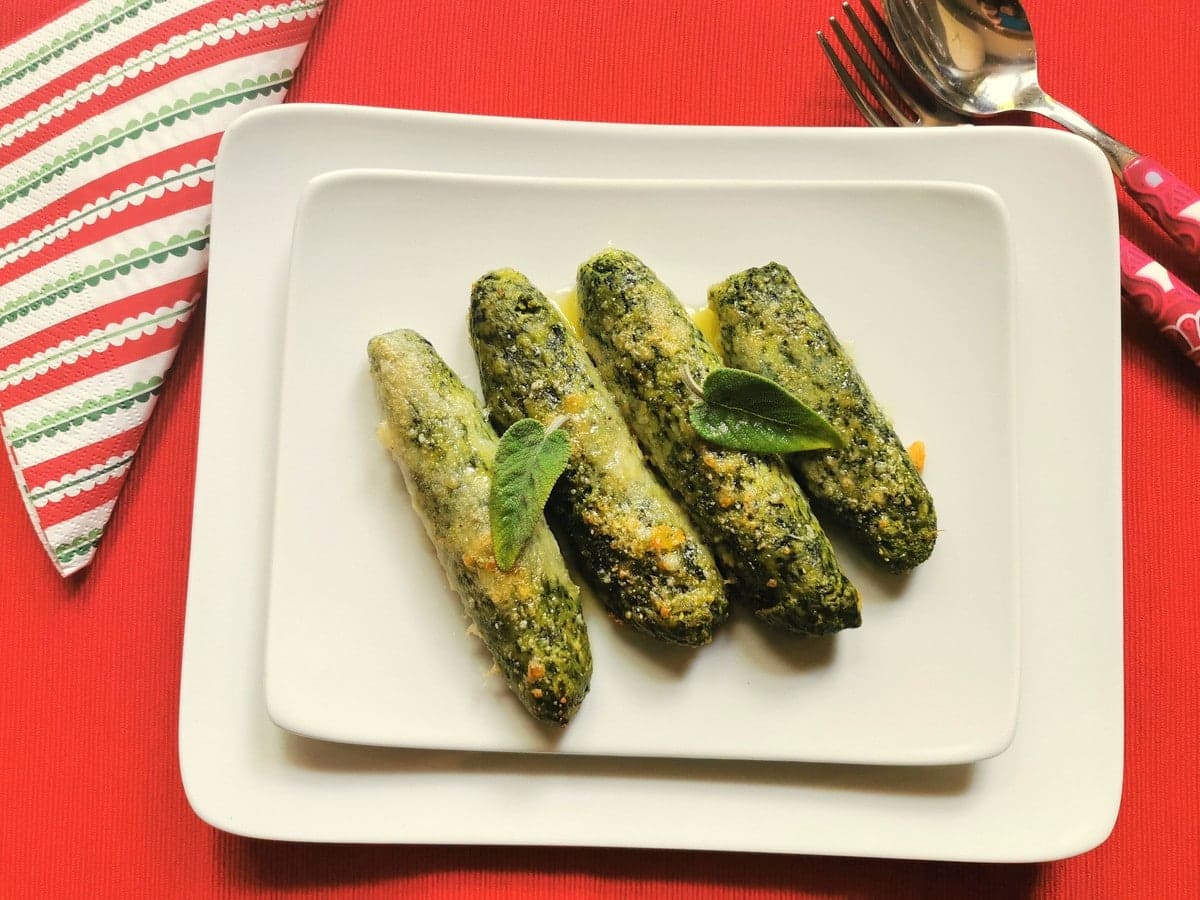
A little rabatòn history!
Traditionally made with Swiss chard and spinach or nettles and wild field herbs and greens (erbette di campo), these divine homemade gnocchi are a traditional dish from a historical area east of the city of Alessandria, known as La Fraschetta. This is where, in 1800, Napoleon fought and won the battle of Marengo against the Austrians.
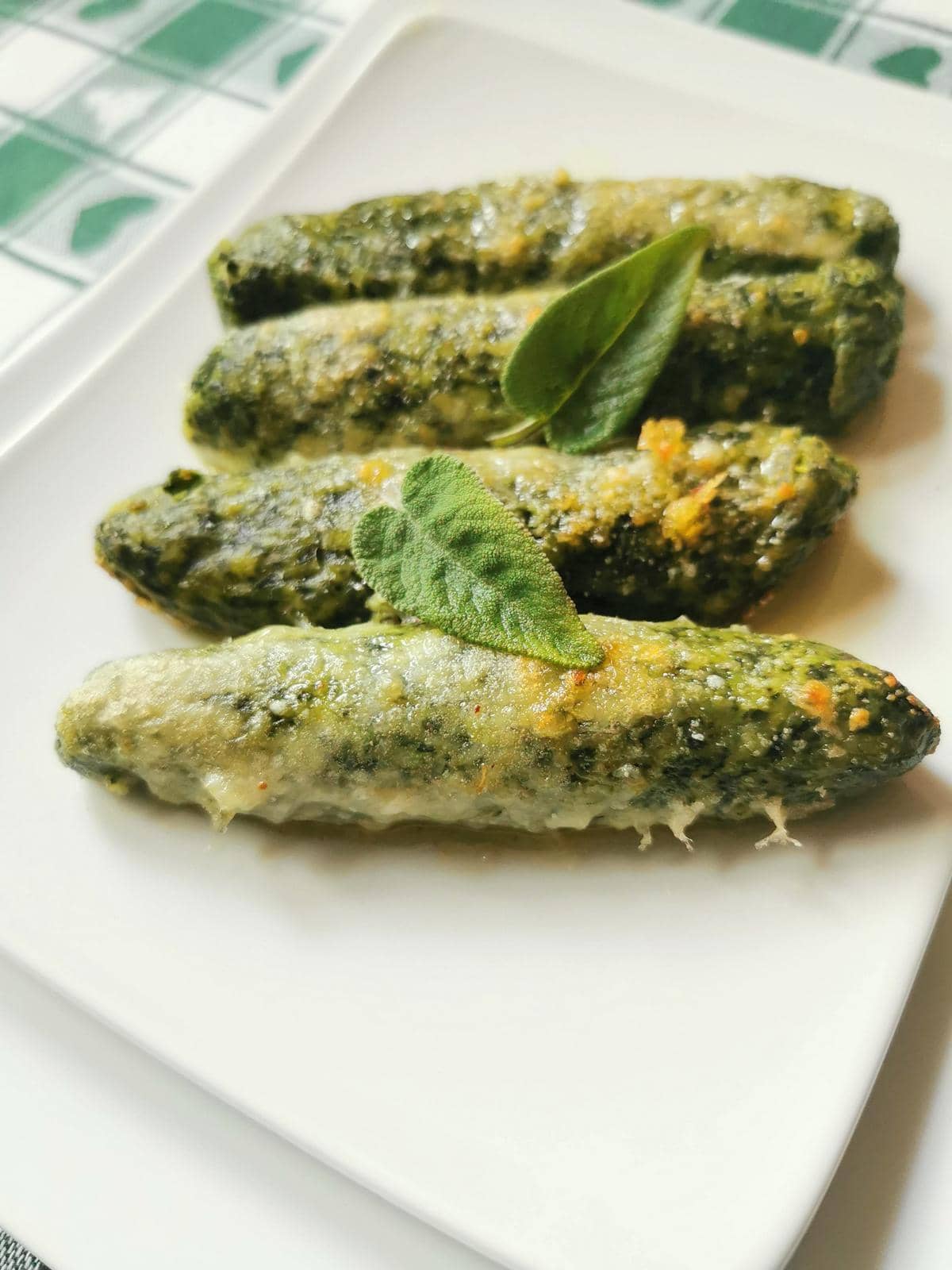
La Fraschetta is an agricultural area made up of 8 small towns and villages located on what is known as the Alessandria plain. One of these villages is called Litta Parodi and it is here that rabatòn is said to have originated. In fact, every year the village holds a rabatòn festival in September.
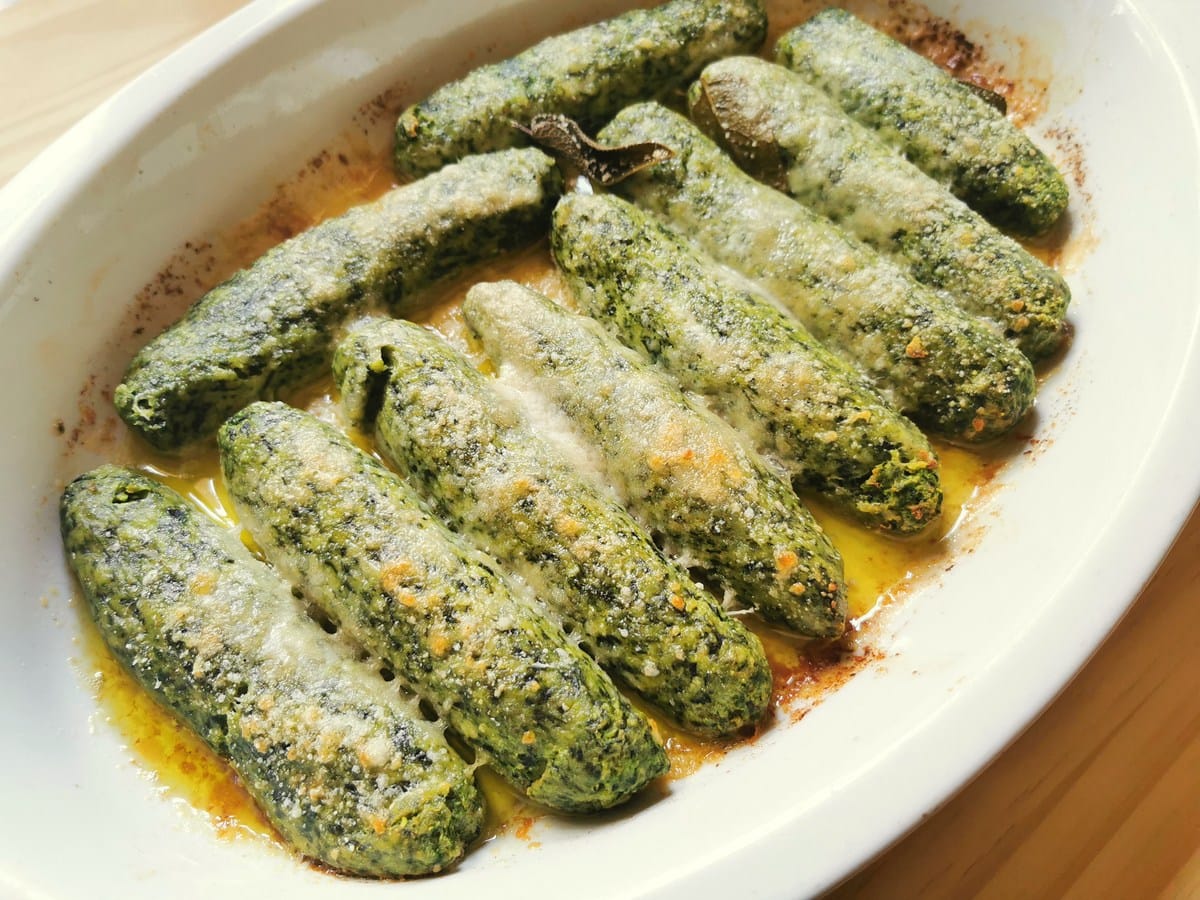
According to some food historians, this large spinach gnocchi was originally made with ricotta and wild greens and herbs bartered for bread and other foods by herders travelling through with their cattle to the summer mountain pastures from the lowlands in the spring. Local women would then make the gnocchi by mixing eggs and bread with ricotta and greens.
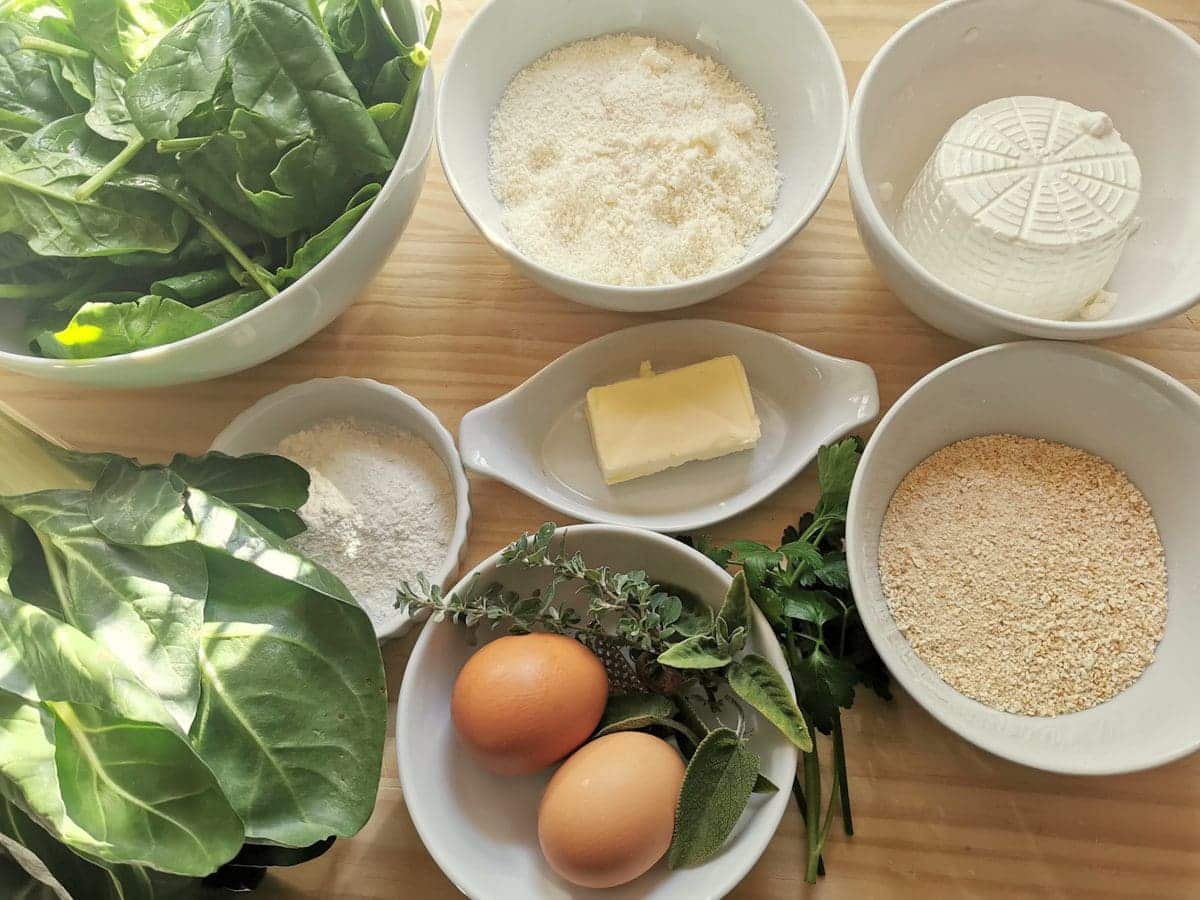
What are Italian erbette di campo?
Italy apparently has one of the richest varieties of plant life in Europe and Italians have long used foraged edible plants, known as erbette di campo, in traditional dishes and herbal medicines. Interestingly, with the advent of agriculture, many wild plants such as rocket (arugula), asparagus and fennel were and still are both cultivated and foraged.
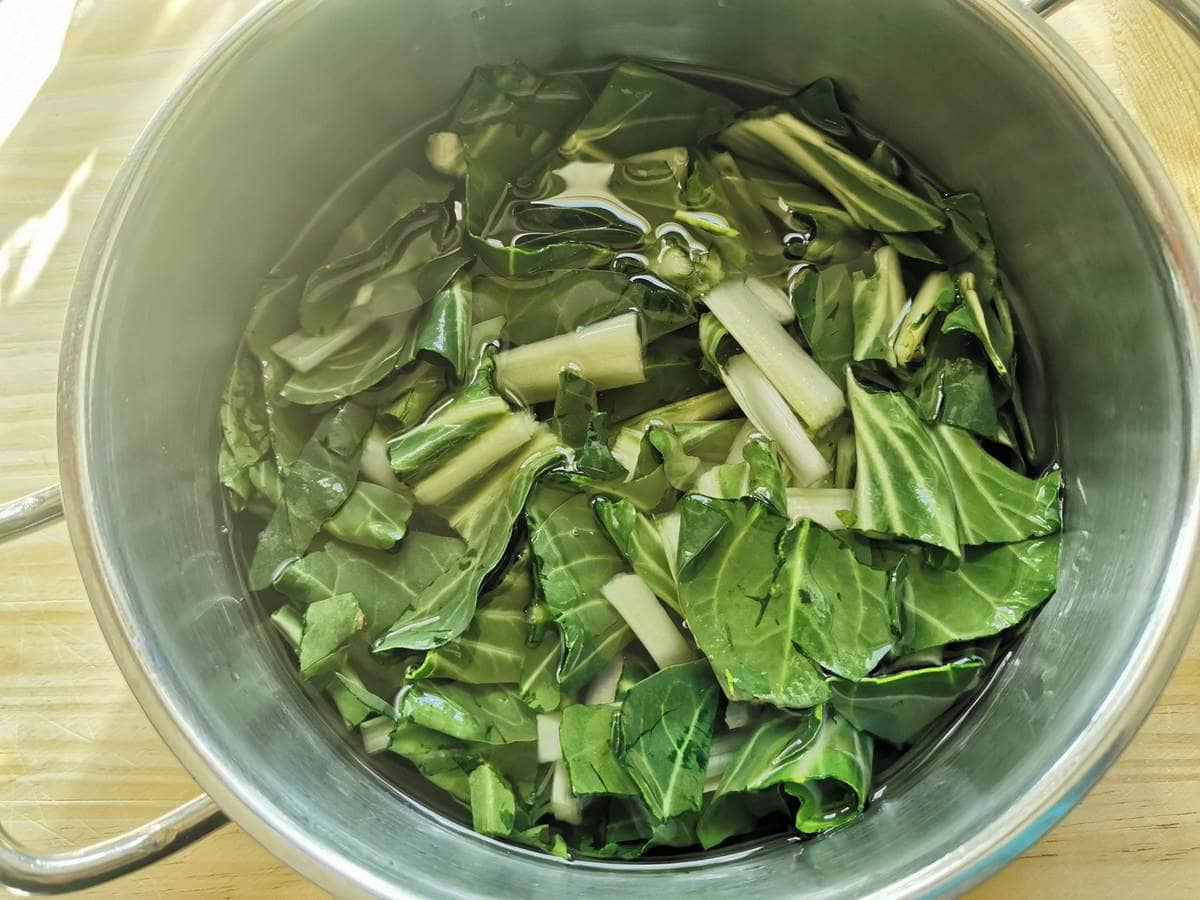
Step 2 wash and clean the greens and cook the spinach and Swiss chard separately if using both.
Apart from those mentioned above, the most popular foraged edible plants used in the Italian kitchen are nettles (ortica), tarrasaco (dandelion), tarragon (dragon cello), sorrel (acetosa), wild garlic (aglio orsino), chicory (cicoria), Swiss chard (bietola), mint (menta), puntarelle (the flower shoots of Catalonian chicory) capers (capperi) and salsola soda (agretti). Of course, there are more.
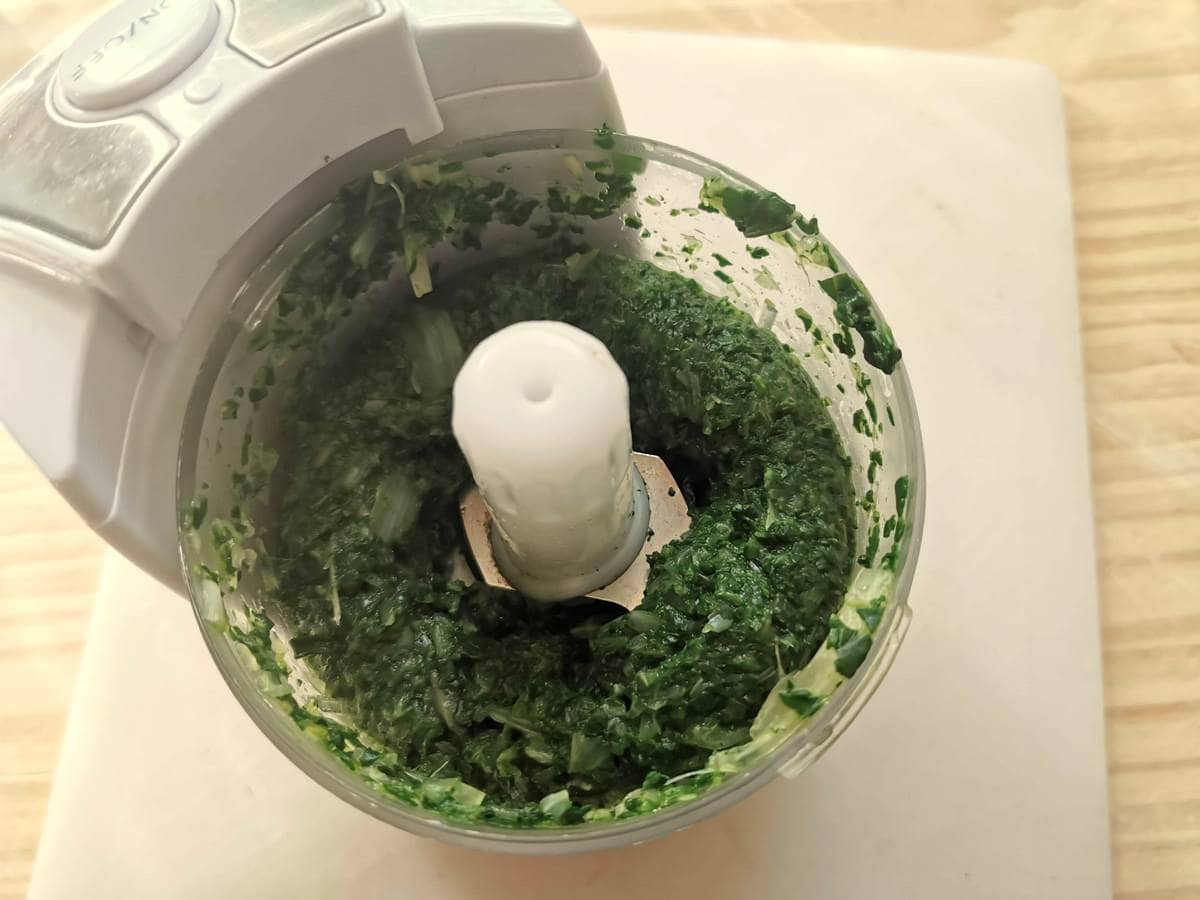
Step 3 Drain the greens really well squeezing out as much water as possible. Then puréé in a food processor.
Spring is the best season for foraging edible plants, but they don’t all grow at exactly the same time of year or in the same parts of the country. Some, like wild fennel, are more prevalent in the south and therefore used in Southern dishes. Others, like wild garlic (aglio orsino), can be found mostly in the North where the climate is more temperate.
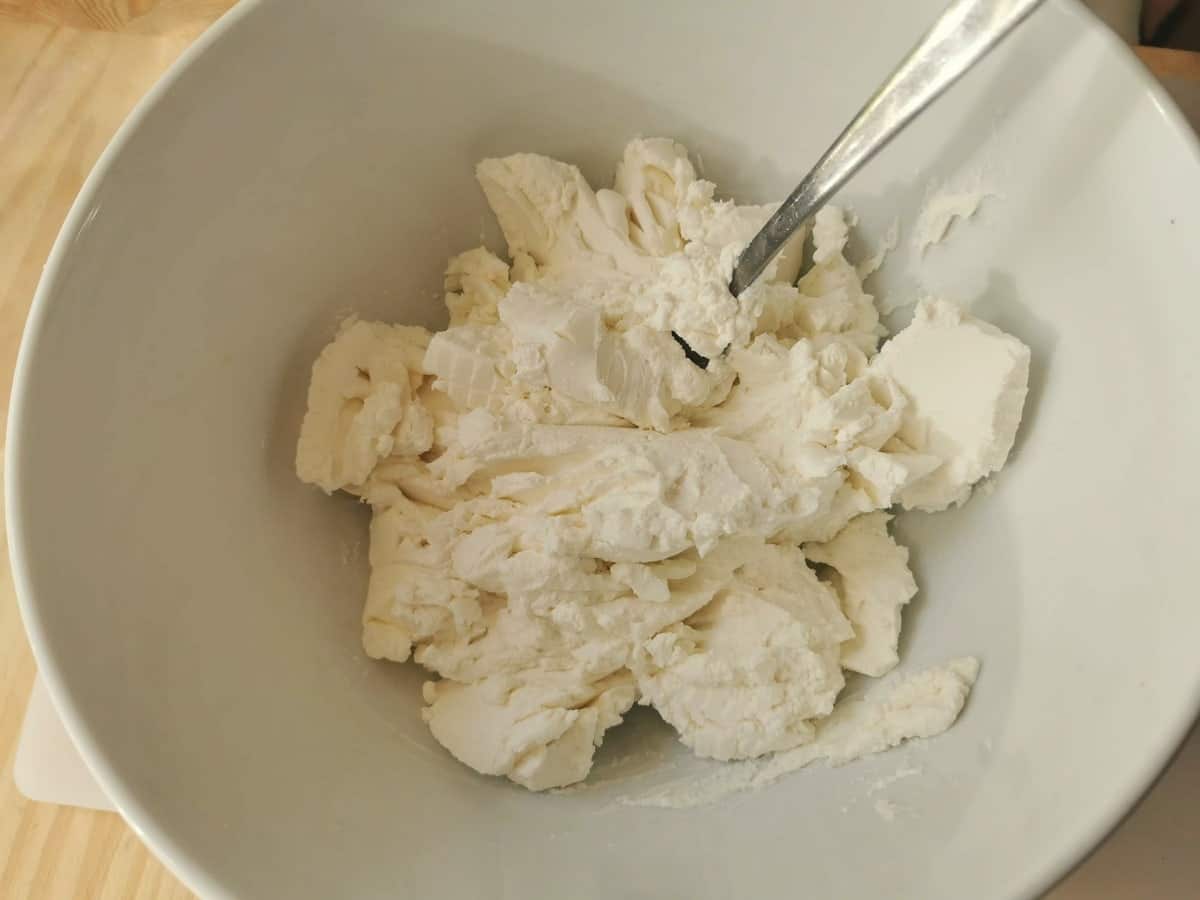
Which greens should you use in your rabatòn?
Originally, these large baked spinach and ricotta gnocchi would have had only wild greens in them. These included wild spinach, chard, nettles, chicory and others depending on the season and availability.
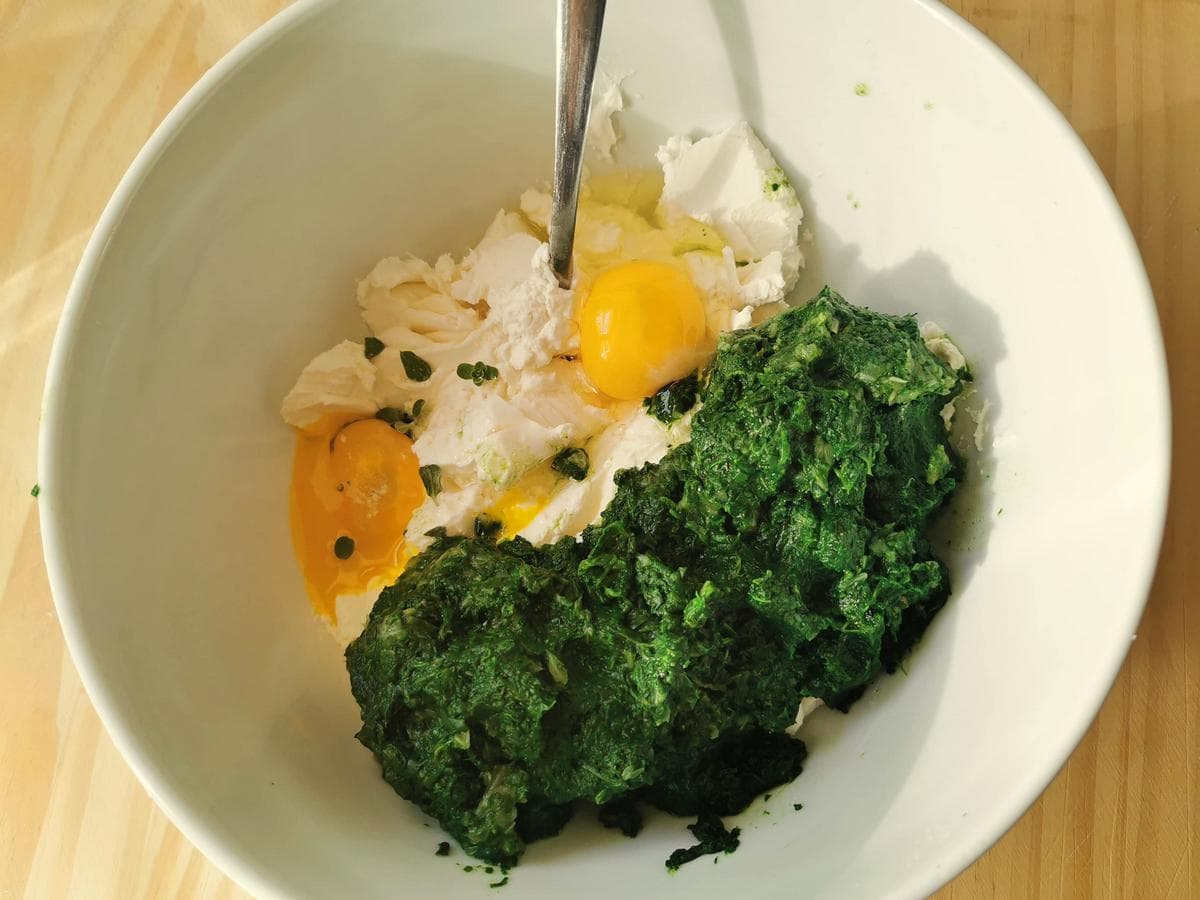
Today, most Italian recipes call for either cultivated spinach or Swiss chard or both. I used both. However, some recipes I found included foraged greens. I think you can use what you have. Frozen spinach would work too. Just make sure you get as much liquid out of it as you can.
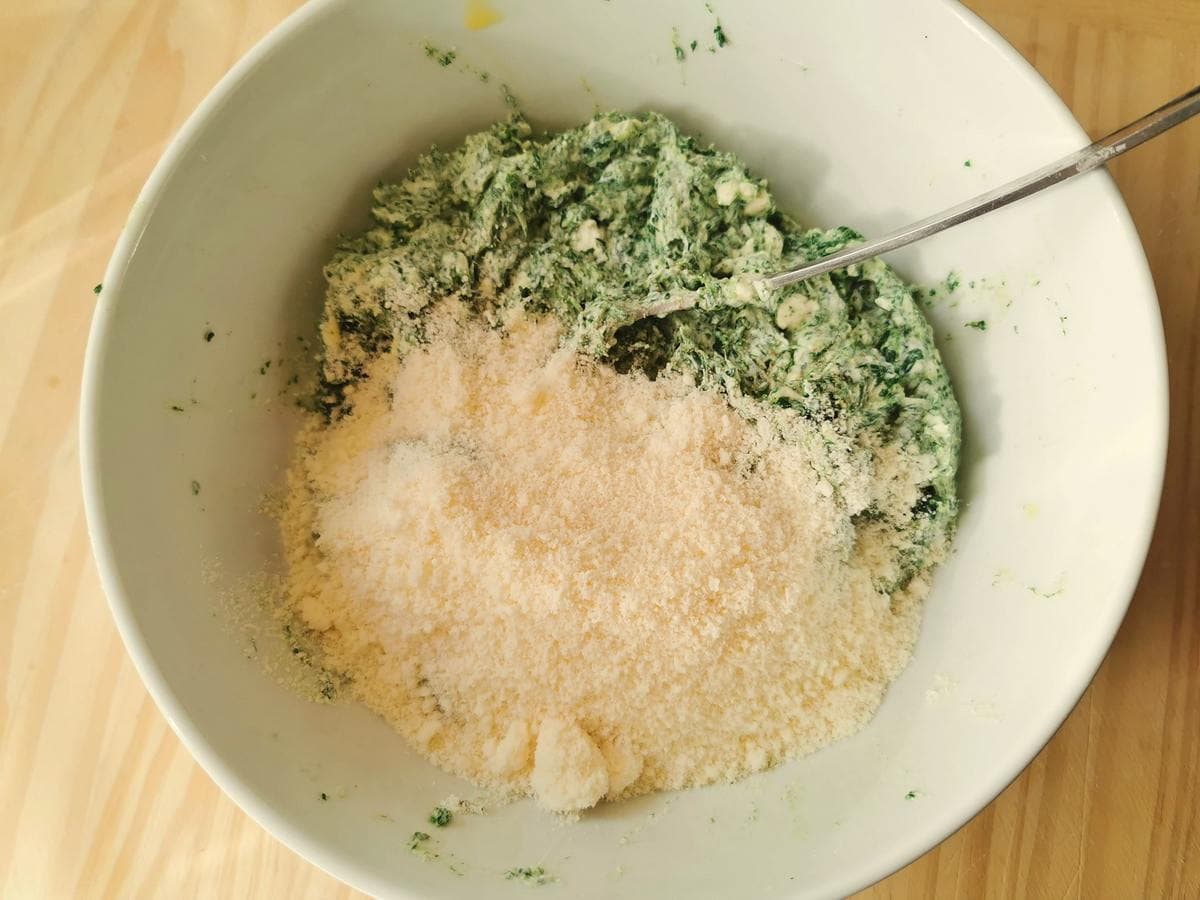
The Swiss chard.
Did you know that chard, also generally known as Swiss chard, doesn’t come from Switzerland but was originally domesticated from wild beets in Sicily? Nowadays, there are many types of chard available to grow and buy. Many people love rainbow chard (which is actually just a mix of different varieties). Whatever the colour of the stems, chard can be used in much the same way as spinach or kale.
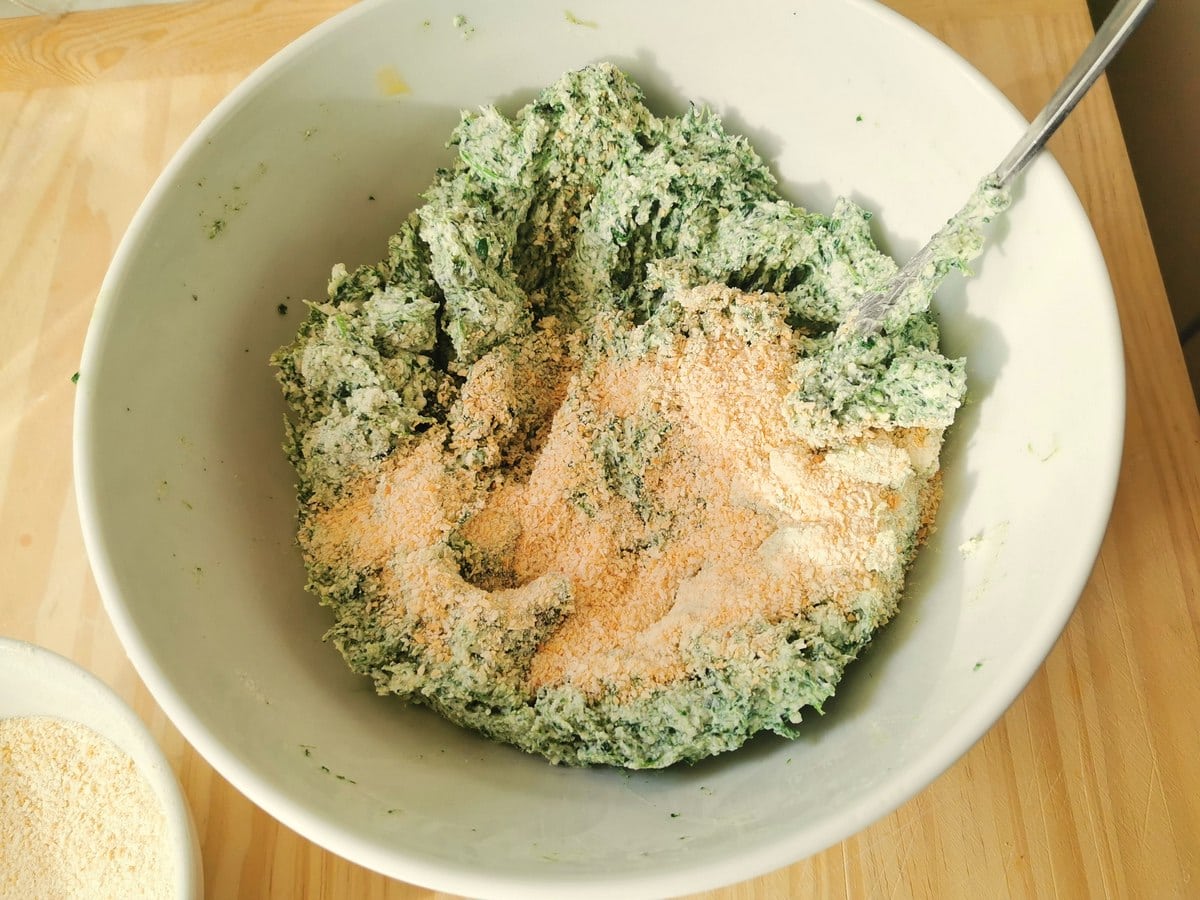
There isn’t a great difference in the flavour of different varieties of Swiss chard so you can use any type for this spinach ricotta gnocchi recipe. You can even use just Swiss chard and leave out the spinach. However, I’m not sure if the coloured stems of certain types of chard will affect the colour of the ‘green’ in this gnocchi.
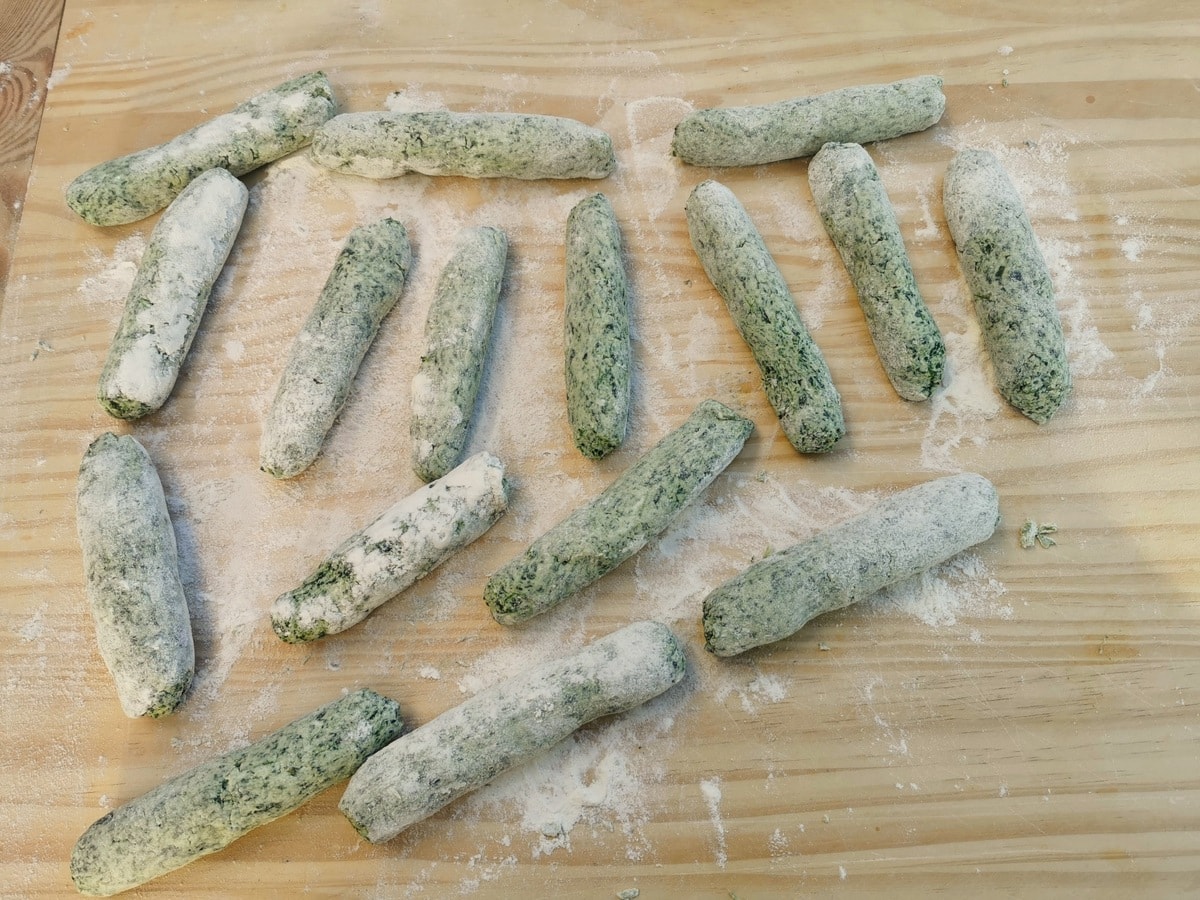
I used Barese Swiss chard which has white stems. So, I used both the stems and the leaves. Apparently, originally chard had only white stems not coloured. I would suggest using just the leaves if your chard has coloured stems. You can use the latter in another recipe. You can add them to soups, bake them and even ferment them.
The ricotta for your homemade spinach gnocchi.
This recipe calls for fresh cow’s milk ricotta. In Piemonte, this gnocchi is also made with a unique ricotta called seirass. Seirass is the local dialect word for ricotta. However, unlike other types, they make this ricotta with milk, not whey.
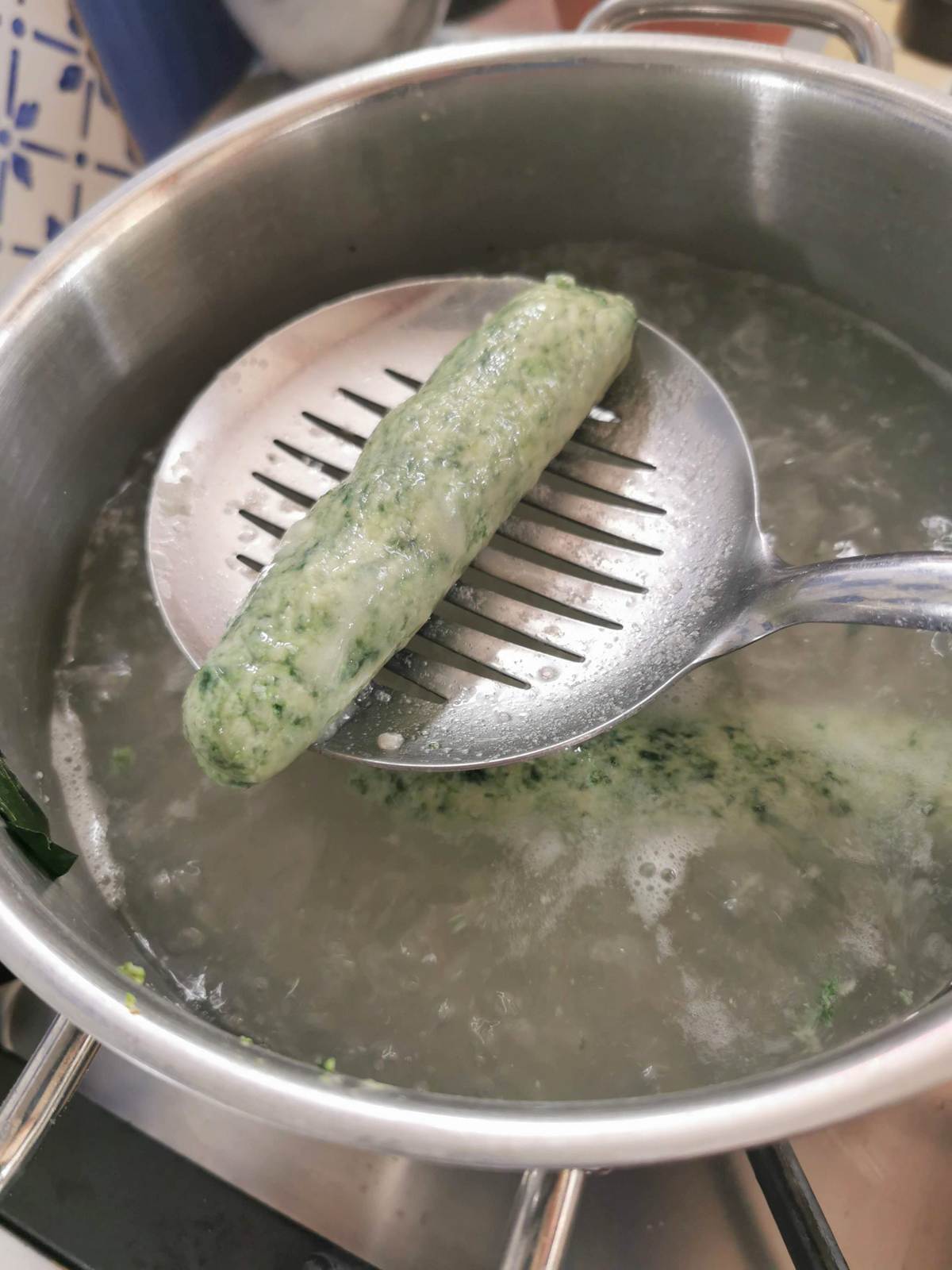
I haven’t tried seirass as it’s not available outside of Piemonte but, apparently, it is a very light, smooth, and fresh ricotta with cream in it. They say it has a more buttery flavour than normal ricotta and is sweeter too. On my to-try list!
Other ingredients.
Apart from the greens and ricotta you need eggs, breadcrumbs, Parmigiano, nutmeg, parsley and marjoram for the spinach gnocchi. Plus, flour to roll them in and butter, more parmigiano and sage when you bake them.
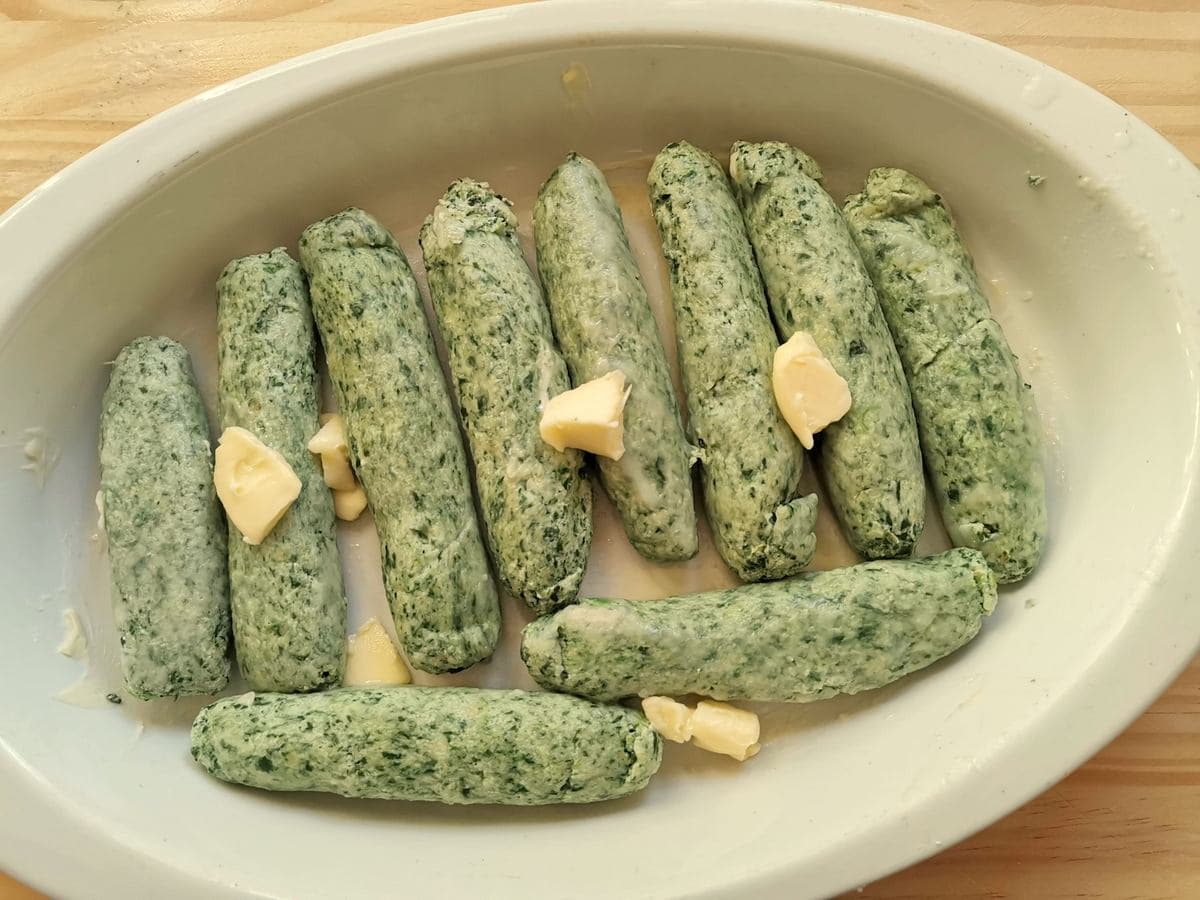
How to make this recipe vegetarian or gluten-free.
Apart from Parmigiano, this recipe is vegetarian. Italian Parmigiano is made with animal rennet and therefore not vegetarian. Use vegetarian parmesan instead.
The only ingredients with gluten are the flour used to roll the ready gnocchi in and the breadcrumbs. You can substitute the wheat flour with gluten-free flour such as almond flour or rice flour. You only need a little.
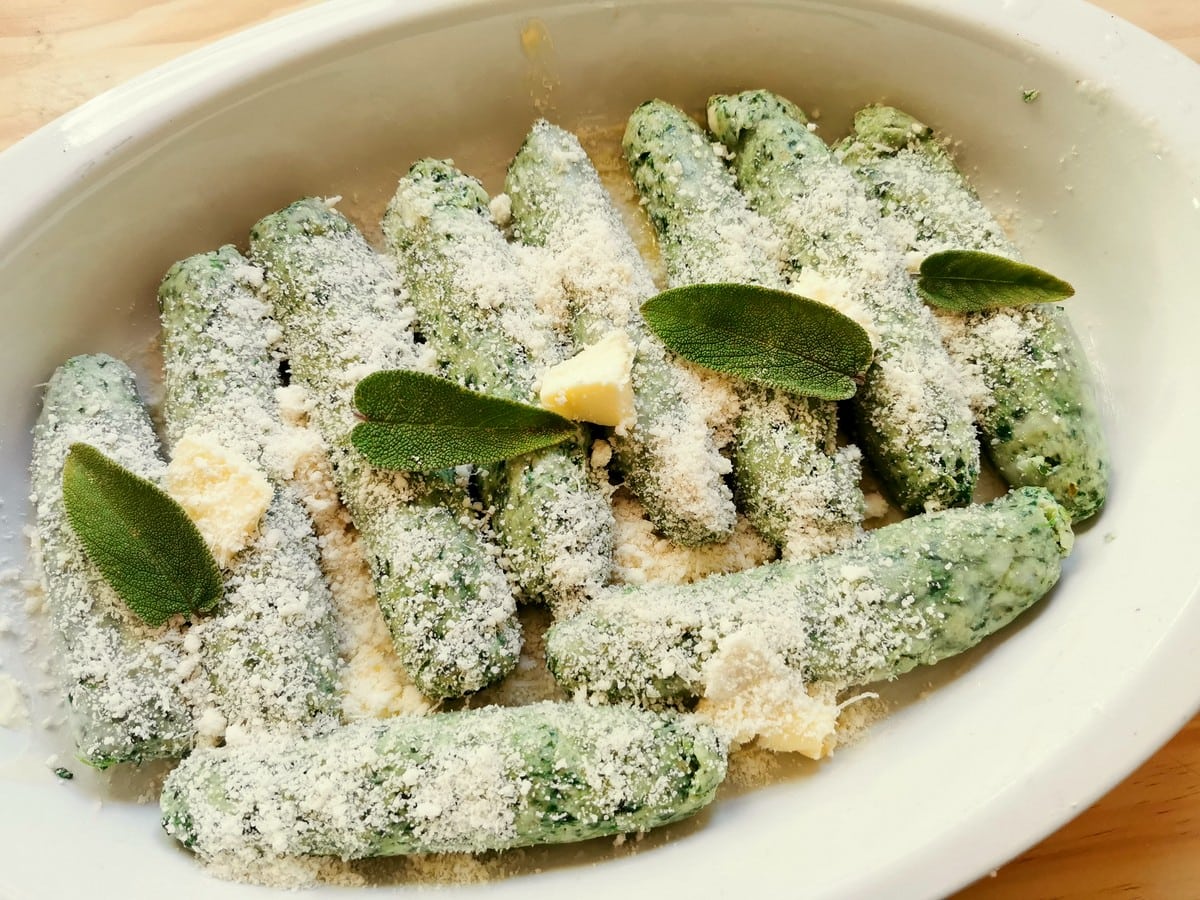
Homemade breadcrumbs from gluten-free bread are better than ready-made, store-bought GF breadcrumbs unless the latter are plain breadcrumbs. Sometimes they are made of nuts and other ingredients which may change the flavour of your spinach gnocchi. Plus, I’m not sure how well the gnocchi will hold together without bread.
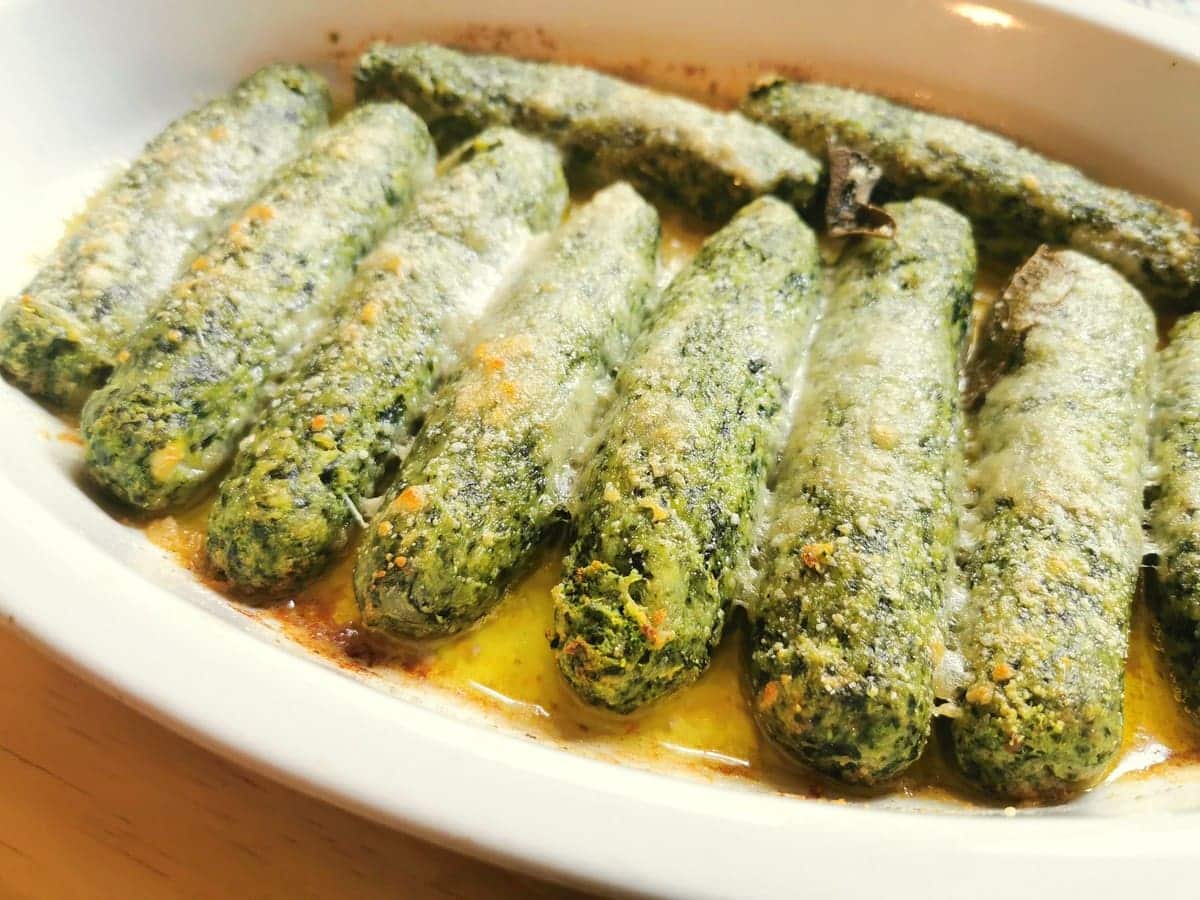
How to serve your homemade spinach ricotta gnocchi.
Traditionally, this large gnocchi is served straight from the oven with some of the melted butter from the baking dish spooned over them. They are also fantastically baked and served in individual portion dishes! Italians eat them as a ‘primo’ or first course (starter) before the main course. But, you can also serve them as a side dish.
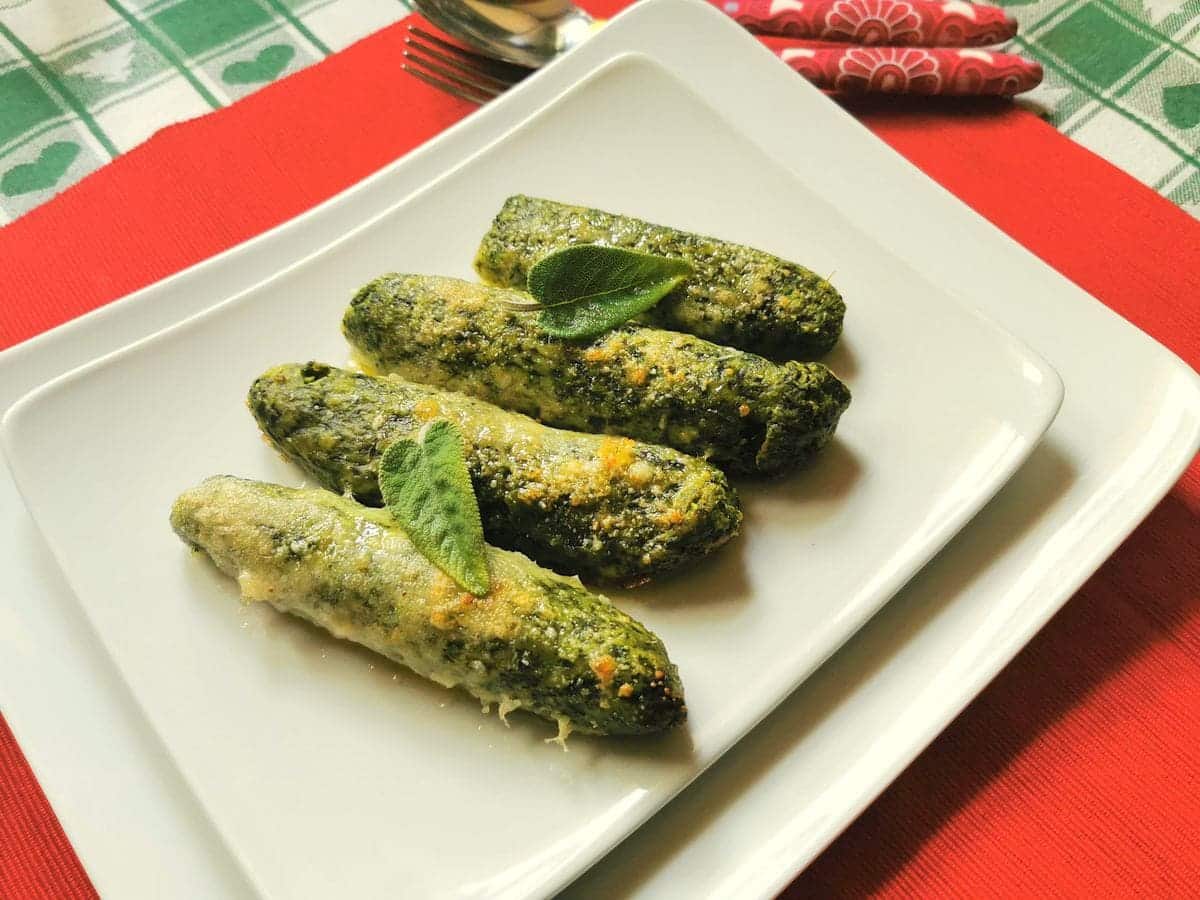
What to do with leftovers.
Your cooked spinach gnocchi can be kept sealed in the fridge for 2-3 days and then reheated in a hot oven with a little more butter and sage, which means you can actually make and bake them a day or two in advance. You can also re-bake them in a tomato sauce in a similar way to this recipe for Tuscan spinach gnudi. Gnudi are very similar to rabatòn.
Let me know what you think.
I can honestly say that rabatòn is the best spinach and ricotta gnocchi I have ever made or tasted! In fact, I’m planning to serve them at Christmas this year because not only are they so very good, but they can be made and baked the day before and then just reheated when you want to serve them without losing any deliciousness! Just a perfect dish for entertaining!
Ingredients
For the spinach ricotta gnocchi.
- 1.1 lbs fresh ricotta (500g)
- 1.1 lbs fresh spinach and /or Swiss chard (500g) you can also use frozen spinach.
- 3.5 oz Parmigiano Reggiano (100g) or vegetarian parmesan
- 2.5 oz breadcrumbs (70g) can be gluten-free breadcrumbs
- 2 oz wheat flour (50g) or gluten-free flour
- 2 eggs One whole, one yolk.
- 2 sprigs of fresh marjoram
- fresh parsley
- ⅓ tsp nutmeg freshly grated
- salt to cook gnocchi and to taste
For baking the gnocchi
- 2 oz butter (50g) more if needed
- sage leaves
Instructions
Prepare the ingredients
- Wash, prepare and cook the greens. If using fresh Swiss chard, wash the chard and cut off the hard end of the stems. Then cut the leaves off from the rest of the stem and cut them into pieces. Finally, slice the stems, so they are quite small. Cook stems and leaves together until the stems are soft. You can also use the stems for another recipe.
- If using fresh spinach, wilt it in a saucepan with just the water on the leaves after washing them.
- Drain the greens really well after cooking and squeeze out as much water as possible. Chop the spinach and chard leaves and stems. Then purée in a food processor. Keep the purée a little rough not too smooth.
Make the gnocchi mixture
- Drain and mash the ricotta in a large bowl with a fork. Add the vegetable purée, one whole egg and one yolk, the marjoram leaves, some fresh parsley and grated nutmeg. Salt to taste. Mix everything together.
- Add the grated Parmigiano or vegetarian parmesan to the bowl and mix again. Then add the breadcrumbs and mix again! If the gnocchi dough feels a little too wet, you can add more breadcrumbs.
Make the spinach gnocchi
- Take about a tablespoonful of the gnocchi mixture. Using your hands roll it into a ball and then roll it into a cigar shape on a well-floured pastry board. This gnocchi should be about as long as your thumb or half the length of a standard fork.
- Pro tip Boil a small pan of water and cook one spinach ricotta gnocchi before making them all to be sure it holds together well. Rabatòn only needs a couple of minutes to cook. Once the gnocchi rises to the surface of the water, remove it with a slotted spoon and place it in a buttered oven dish.
Cook and serve the gnocchi
- Heat the oven. Cook the gnocchi 3 to 4 at a time as per above in boiling salted water. Place them in one layer in a well-buttered oven dish.
- Add pieces of butter on top of the spinach gnocchi along with some sage leaves. Finally, sprinkle with Parmigiano and bake in a preheated oven at 200°c (392 °f) until the cheese on top starts to brown.
- Serve immediately with some of the melted butter from the oven dish spooned over the gnocchi.
Notes
Rabatòn can be made and baked the day before and then just reheated when you want to serve them without losing any deliciousness! You can also rebake in tomato sauce.
To make this recipe vegetarian use vegetarian parmesan instead of Italian Parmigiano.
To make this recipe gluten-free, use GF flour and GF plain breadcrumbs (see content for more details)
Serves 6 as a starter, and 4 as a main course. I got 18 gnocchi out of the ingredient quantities in this recipe.
[ad_2]